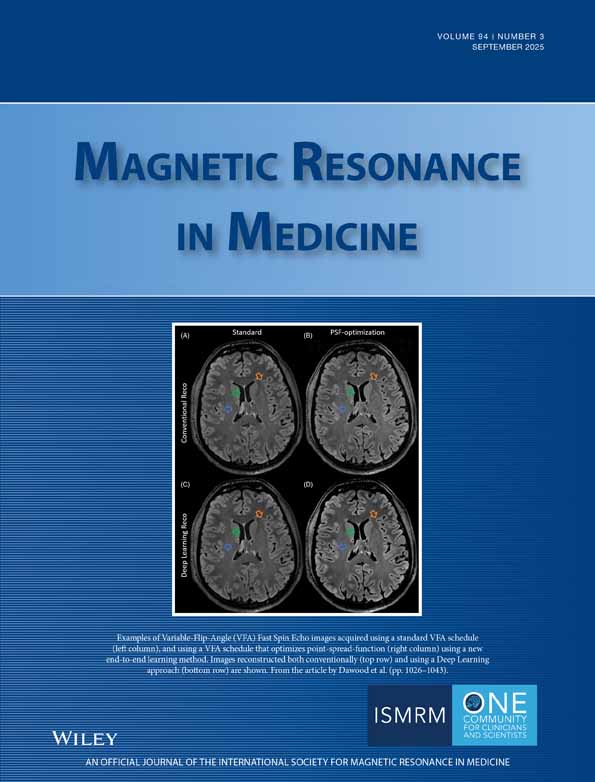Spatial domain method for the design of RF pulses in multicoil parallel excitation
Abstract
Parallel excitation has been introduced as a means of accelerating multidimensional, spatially-selective excitation using multiple transmit coils, each driven by a unique RF pulse. Previous approaches to RF pulse design in parallel excitation were either formulated in the frequency domain or restricted to echo-planar trajectories, or both. This paper presents an approach that is formulated as a quadratic optimization problem in the spatial domain and allows the use of arbitrary k-space trajectories. Compared to frequency domain approaches, the new design method has some important advantages. It allows for the specification of a region of interest (ROI), which improves excitation accuracy at high speedup factors. It allows for magnetic field inhomogeneity compensation during excitation. Regularization may be used to control integrated and peak pulse power. The effects of Bloch equation nonlinearity on the large-tip-angle excitation error of RF pulses designed with the method are investigated, and the utility of Tikhonov regularization in mitigating this error is demonstrated. Magn Reson Med, 2006. © 2006 Wiley-Liss, Inc.



 -weighted functional MRI
-weighted functional MRI
